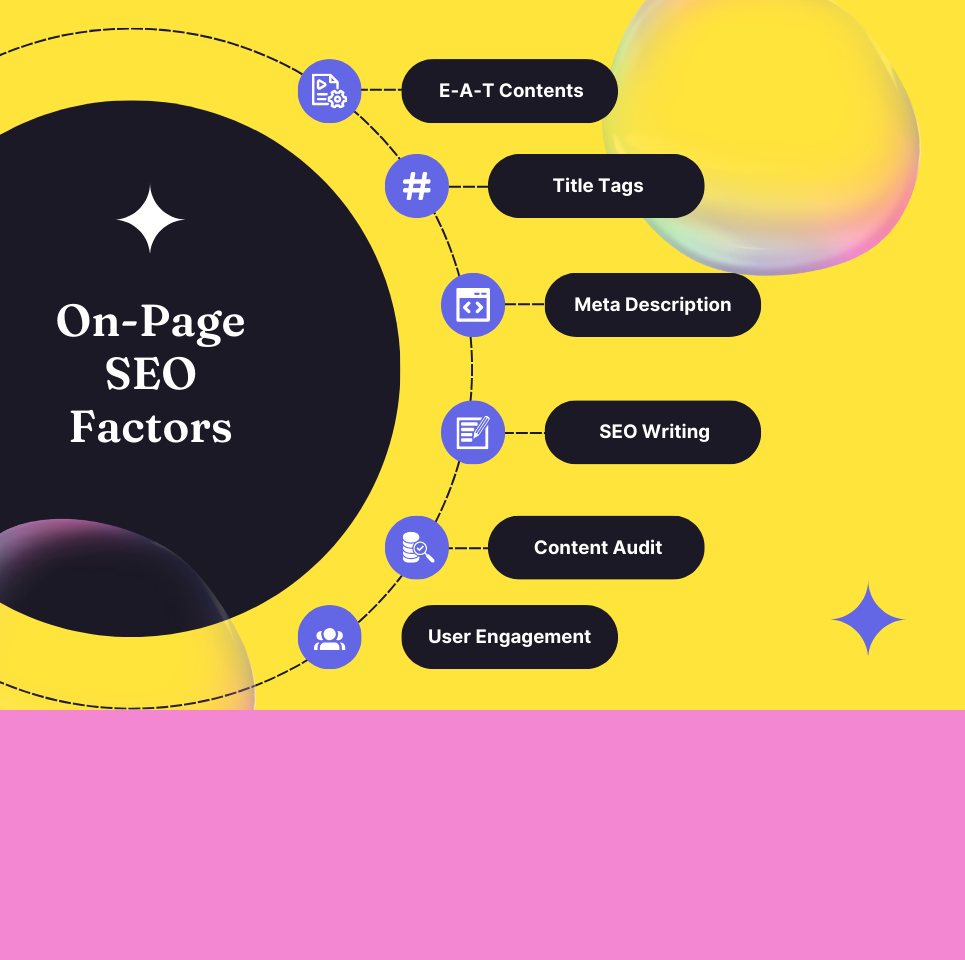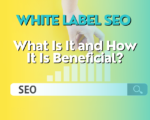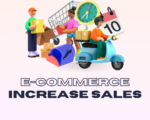What Are the Important Factors in On-Page SEO?

The rabbit’s out of the magician’s hat! Now, everyone seems to know the trick. Search Engine Optimization (SEO).
Good SEO = Higher Rankings.
But. Do we really know effective SEO? Well, many of us might claim to be on-page SEO maestros. We must consider some factors to gauge our marketing efforts.
On-page SEO plays a key role in increasing website rankings and visibility in search results, optimizing various elements on each web page to be more search engine- and user-friendly.
By paying attention to factors such as keyword optimization, content quality, HTML tags, page speed, user experience, and more, you can increase website performance while simultaneously drawing organic traffic to it.
In this TeCurious article, we will discuss key elements that contribute to effective On-Page SEO implementation.
We love providing insights and actionable tips.
So, you will learn a lot about boosting its optimization for maximum visibility and improved search engine rankings.
Let’s GO!
Understanding On-Page SEO
Optimizing various elements on your web pages in order to increase their visibility and ranking within search engine results pages (SERPs). That was quite a mouthful!
Still, this is what defines on-page SEO as the “secret sauce” behind any successful website. Think of it like giving your site the prom queen of search engine results!
Importance of On-Page SEO Services in 2023 & Beyond
Why Should You Care about On-Page SEO? My dear reader, it can make all the difference when considering how search engines perceive and rank your website.
By fine-tuning the on-page elements, you can draw in more organic traffic while increasing the odds of higher rankings – ultimately becoming one step closer to taking over the world wide web (or at least a piece of it!).
Now, let us reveal all the important factors we are here for!
Keyword Optimization and Research
Conduct Keyword Research Step by Step
Imagine yourself on an undercover mission to discover the perfect keywords for your website – like Sherlock Holmes but without solving crimes!
Keyword research will allow you to unlock the words and phrases being searched by potential customers who need businesses like yours.
Keyword Placement and Frequency Analysis
Now that you have your keywords in hand, it is time to put them to use. Just as a chef adds salt and pepper to their meal, keywords should be strategically sprinkled throughout your website’s content to optimize SEO results.
But be wary: overdoing it with keywords could turn search engines off faster than a lemon can turn bitter!
Long-Tail Keywords
Long-tail keywords are like unicorns of the keyword world: hard to come by but powerful when found.
Instead of simply going for “shoes”, long-tail keywords target niche audiences more specifically. So rather than going with “shoes,” consider “comfortable running shoes for flat feet”. When successful, long-tail keywords could be like finding gold at the end of a rainbow!
Content Quality and Relevance
Crafting High-Quality Content
Content is the lifeblood of the internet. Crafting high-quality content is like baking an irresistibly tasty cake: fresh, tasty, and satisfying your readers with every bite.
Producing this kind of engaging writing not only engages your target audience but will also draw search engines in like never before!
So put on your apron and start crafting irresistibly good writing – they won’t resist you!
Maintaining Content Relevance
Imagine, my friend, searching for fluffy pancakes but instead getting served pages on quantum physics instead! Frustrating!
That’s why your content must satisfy both the target audience’s needs and their search intent.
Otherwise, it risks becoming irrelevant to what people want or expect to find online.
Optimizing Content-Length and Formatting
Content length should strike a balance, like Goldilocks with her porridge. Too short can lack substance, while too long may bore readers to death.
Aim for an ideal length that effectively conveys your message – and add subheadings, bullet points, and visuals where appropriate.
Nobody likes reading through an ocean of text!
Title Tag and Meta Description Optimization
Writing Effective Title Tags
Your title tag is like the headline of a newspaper. It must capture people’s attention, spark curiosity, and tell search engines what your page is all about.
Think of it as your opportunity to make a great first impression. Craft an eye-catching and relevant title tag that makes searchers click faster than Taylor Swift’s latest hit single!
Optimizing Meta Descriptions (Meta Keywords)
Meta descriptions serve as movie trailers for your web pages, giving users an idea of what they can expect to see if they click your link.
So, make the most out of those meta descriptions! Use captivating language, emphasize benefits, and leave readers wanting more.
Just remember to keep it concise – nobody has time for an essay!
Integrate Keywords into Titles and Descriptions for maximum effect
Now is the time, my friend, to incorporate relevant keywords into your meta descriptions and titles. This sends the right signals to Google, Bing, and other search engines that your page matches what users are searching for.
But don’t overdo it – keep things natural, and avoid keyword stuffing altogether. And don’t resort to keyword stuffing, as this could end up leaving an unappetizing, tasteless mess behind!
Now you know the important elements of On-Page SEO – from keyword selection and anchor text usage to URL structure and internal linking strategies – as a basis for On-Page SEO success!
Optimization of your website is an ongoing process. So, continue experimenting, learning, and perfecting your SEO game – happy optimizing!
URL Creation For SEO Optimization
For successful on-page SEO, your URLs need some love, too. Instead of making use of an unintelligible mix of letters and numbers as URLs, create descriptive ones that give users and search engines an understanding of the page content.
For instance, instead of “www.example.com/p=1234567,” go for something like “www.example.com/10-tips-for-seo-success.” It not only looks better but increases your odds of ranking higher in search results!
Apply Canonical URLs Accurately
Canonical URLs serve as the responsible elder sibling to duplicate content. When there are similar pages with similar information, canonical URLs help search engines identify which version should be considered the original or preferred one.
This eliminates confusion while consolidating SEO value onto one page and potentially avoiding penalties associated with duplicated material.
Implement Internal Linking Strategies
Internal links are the backbone of your site, helping search engines and users understand its structure while providing pathways for exploration.
By strategically placing internal links, you can direct both search engines and users toward your most critical pages. Just take care not to overdo it and create an overwhelming network of hyperlinks!
HTML Tags and Structured Data Markup
Optimizing Heading Tags
Heading tags such as H1, H2, etc. not only help make your content more readable but also send signals to search engines about its structure and hierarchy.
By including keywords within headings organized logically, you can boost SEO. Just be mindful not to overstuff keywords and keep your headings meaningful and relevant for maximum SEO gains!
Image Alt Tags Images can add visual interest to a website, but search engines cannot see them directly. Therefore, they rely on alt tags for a better understanding of what each image represents.
Be sure to add descriptive alt tags for your images with relevant keywords where applicable. This helps search engines and people with visual impairments benefit from the alternative text that describes these images.
Implementation of Structured Data Markup
Structured data markup gives your content an extra boost with search engines. By adding schema markup to HTML pages, you provide more context and details about your content for search engines to comprehend and display in rich snippets.
From recipes to events, structured data markup exists for various forms of content to make sure it stands out in search results. Take advantage of it today so your search results stand out more!
Page Speed and Mobile Compatibility (PC and Mobile Compatibility)
Optimize website loading speeds
Waiting for a sluggish website to load can be like watching paint dry in slow motion – only less exciting. A slow-loading website can frustrate users and damage search engine rankings.
To maximize speed, ensure your website is optimized by compressing images, minifying code, and employing caching techniques. That way, visitors won’t hit “back” before even seeing what you offer.
Ensuring Mobile-Friendly Design
In this age of smartphones, having a website that’s mobile-friendly is no longer just an extravagance; it is now essential.
More and more people use mobile devices to browse the web, and search engines have taken notice.
A responsive design that adapts to multiple screen sizes and provides a seamless mobile experience is, therefore, vital. Don’t be the website whose visitors must pinch-zoom just to read a single line of text!
Minimizing Page Elements and Code
As it relates to web design, less is usually more. Simplify your pages by eliminating unnecessary elements and code. This helps improve page speed and creates a smoother user experience.
Discard any heavy scripts or plugins weighing down your website in favor of what really adds value – clutter-free pages make happier visitors!
Metrics on User Experience and Engagement
Enhancing User Experience
User experience is at the core of any successful website. Aim for easy navigation, visually appealing pages, and providing valuable content. Always consider factors like readability, intuitive design, and clear calls-to-action.
The more satisfied and engaged your visitors are, the higher their likelihood will be of sharing it which in turn leads to improved rankings for your content.
Reduce Bounce Rate
A high bounce rate is like an uninvited guest at any party – meaning users arrive on your page and leave before engaging further with it.
To reduce it, make sure that content delivers as promised, load times are fast, and the entire website provides an engaging experience – keeping visitors engaged and encouraging them to explore further.
Measuring and Analyzing Engagement Metrics
Staying abreast of engagement metrics is crucial. Your users’ time on the page, click-through rates, and social shares can provide invaluable insights. These essentially convey how users are responding to your content.
Tools like Google Analytics are invaluable tools for keeping an eye on and evaluating these metrics. Therefore, you can see what’s working and where improvements need to be made.
Final Remarks
In the realm of on-page SEO, success hinges on a fusion of technical prowess, content quality, and user-centric optimization.
By meticulously attending to on-page factors like keyword relevance, meta tags, content depth, and user experience, businesses can forge a path toward enhanced online visibility and engagement.
Remember, a comprehensive on-page SEO strategy is not merely about search engine algorithms; it’s about delivering valuable, relevant, and user-friendly content.
Keep these pivotal factors in mind, as they form the cornerstone of an effective on-page SEO strategy.
And don’t just sit back! Take action as advised. We assure you that you’ll be propelling your digital presence to new heights in the ever-evolving online landscape!
Dive into the future of tech with TeCuriosity! Subscribe to our newsletter for a regular, techy dose of innovation and unlock the secrets of tomorrow. Join the curious minds!














